Abstract
Normal ICR mice were infected intravenously, intraperitoneally, or aerogenically with Pasteurella multocida strains isolated from a turkey (S68), calf (V90), or rabbit (J20) lung. Both the turkey and calf isolates were highly virulent for mice and multiplied logarithmically in the lungs, liver, and spleen, resulting in death of the animals in 18 to 36 h. The rabbit strain was avirulent for mice, but repeated passage in mice did result in some increased virulence. All three strains of P. multocida were inactivated rapidly by normal mouse peritoneal macrophages, provided that the organisms were opsonized with specific hyperimmune serum before being exposed to the macrophage monolayers. P. multocida was slowly inactivated by normal mouse alveolar macrophages when the organisms were preopsonized. However, the surviving organisms later multiplied extensively in vitro. Macrophages harvested from hyperimmunized mice were no better at inactivating opsonized P. multocida cells than were normal mouse cells. The relative importance of the different phagocytic cell populations in the uptake and killing of opsonized P. multocida cells is discussed in relation to immunity to this important animal pathogen.
Full text
PDF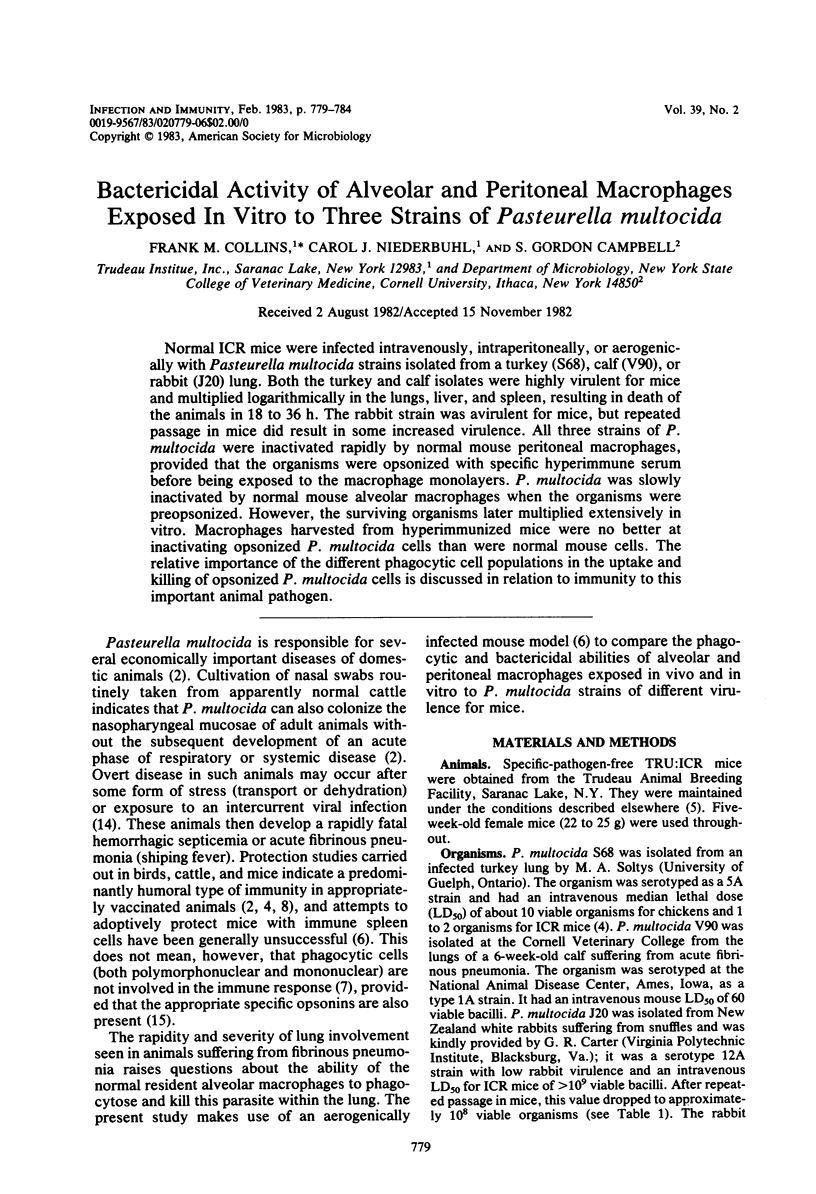
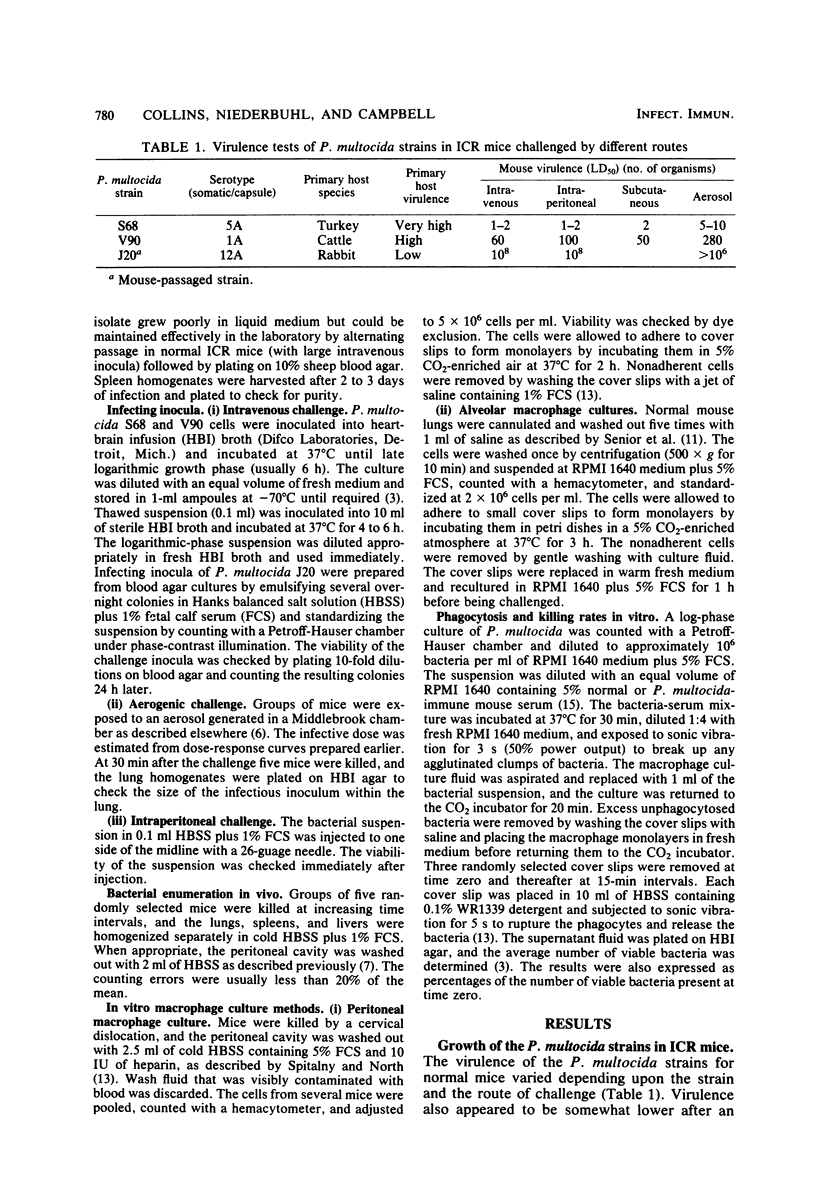
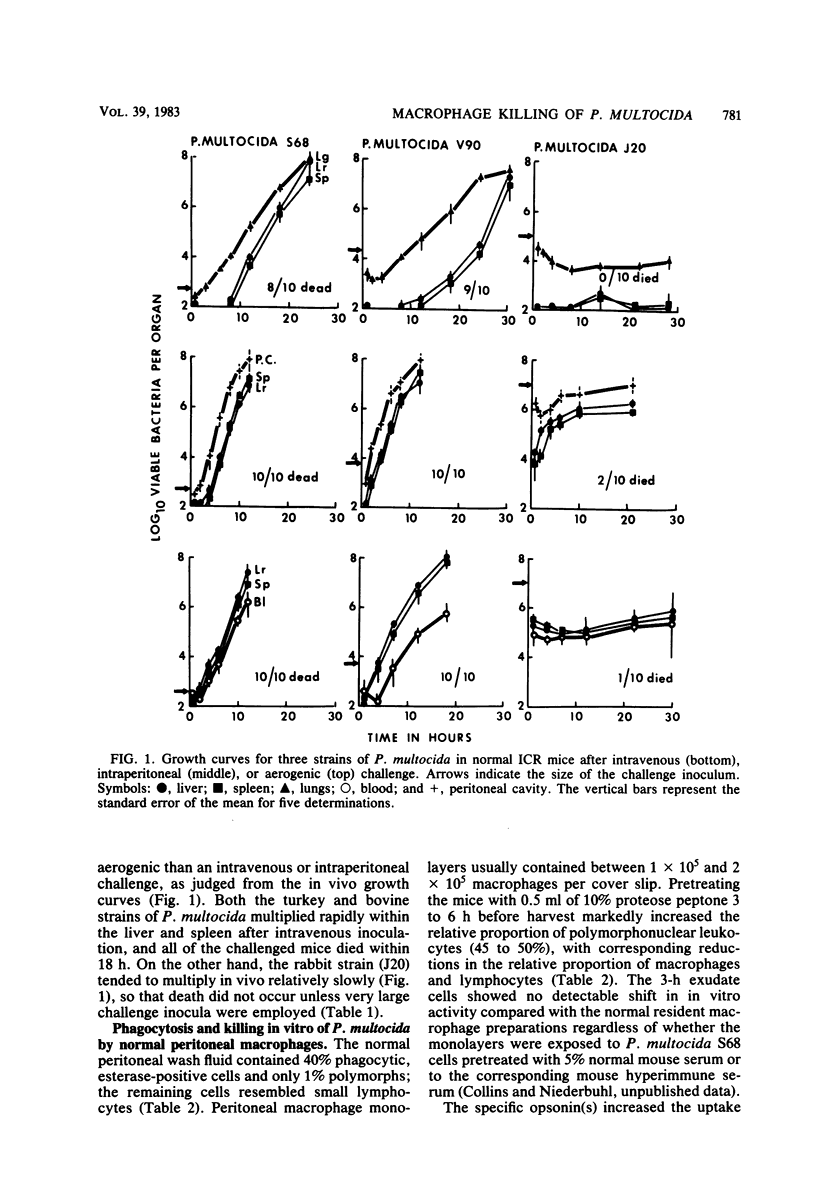
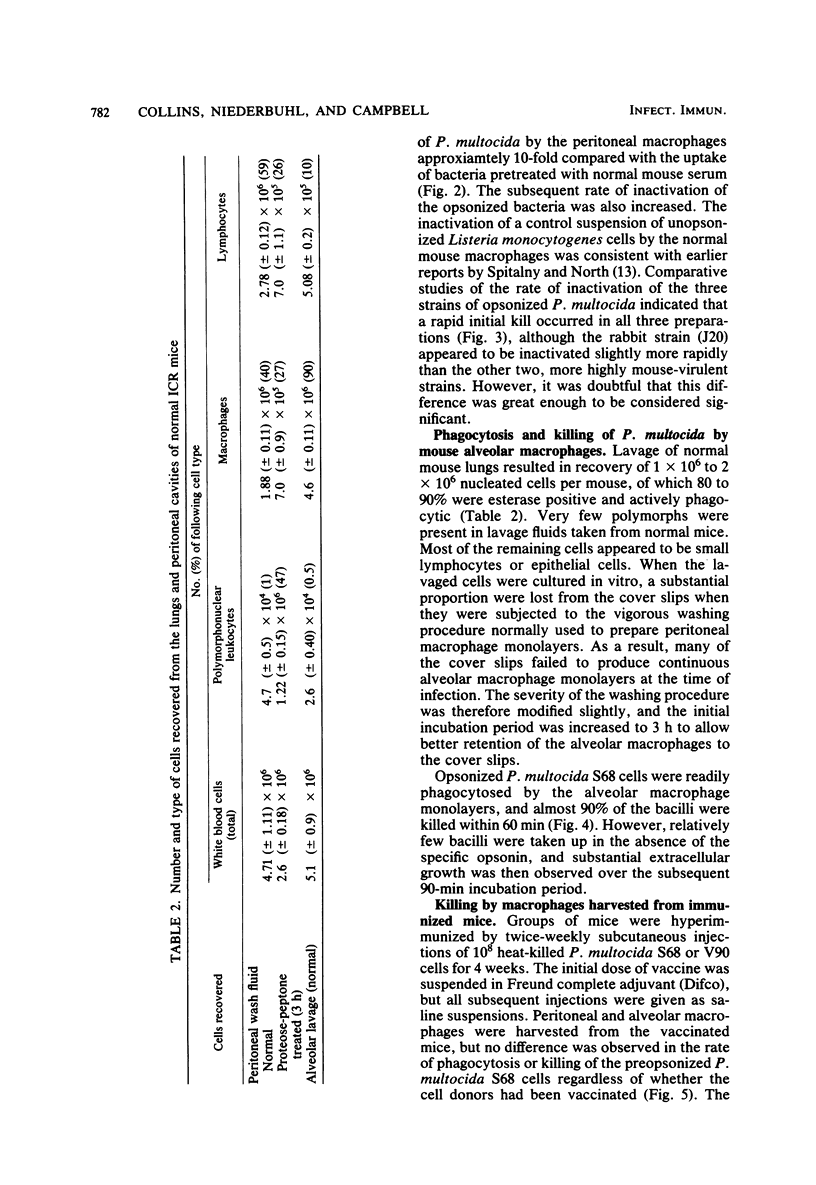
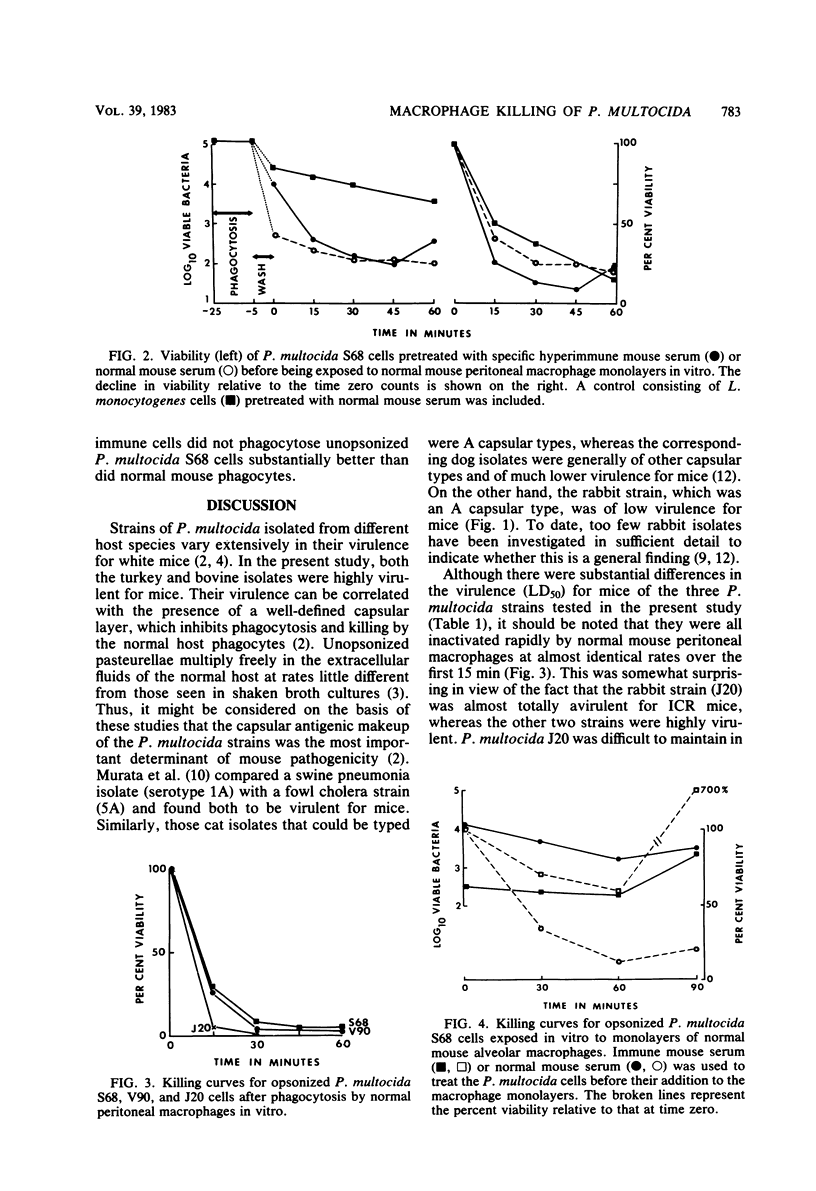
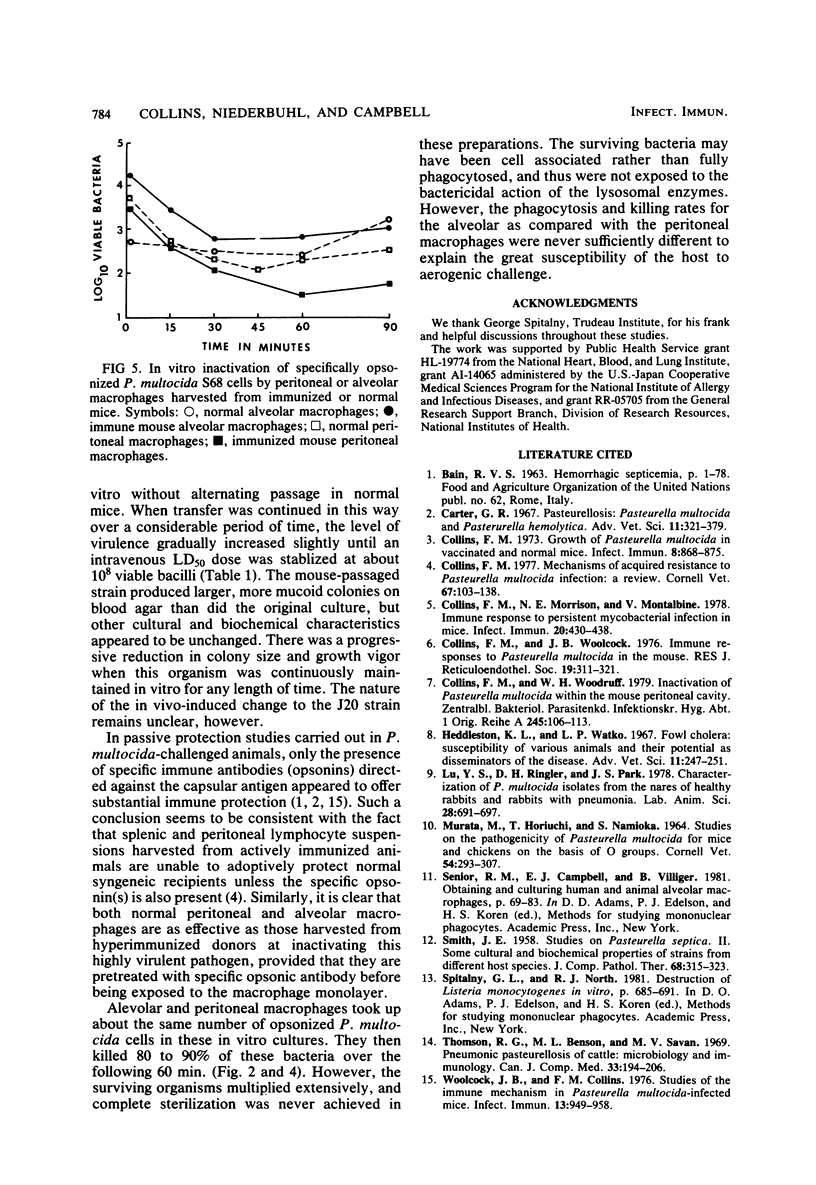
Selected References
These references are in PubMed. This may not be the complete list of references from this article.
- Carter G. R. Pasteurellosis: Pasteurella multocida and Pasteurella hemolytica. Adv Vet Sci. 1967;11:321–379. [PubMed] [Google Scholar]
- Collins F. M. Growth of Pasteurella multocida in vaccinated and normal mice. Infect Immun. 1973 Dec;8(6):868–875. doi: 10.1128/iai.8.6.868-875.1973. [DOI] [PMC free article] [PubMed] [Google Scholar]
- Collins F. M. Mechanisms of acquired resistance to Pasteurella multocida infection: a review. Cornell Vet. 1977 Jan;67(1):103–138. [PubMed] [Google Scholar]
- Collins F. M., Morrison N. E., Montalbine V. Immune response to persistent mycobacterial infection in mice. Infect Immun. 1978 May;20(2):430–438. doi: 10.1128/iai.20.2.430-438.1978. [DOI] [PMC free article] [PubMed] [Google Scholar]
- Collins F. M., Woodruff W. H. Inactivation of Pasteurella multocida within the mouse peritoneal cavity. Zentralbl Bakteriol Orig A. 1979 Oct;245(1-2):106–113. [PubMed] [Google Scholar]
- Collins F. M., Woolcock Immune responses to Pasteurella multocida in the mouse. J Reticuloendothel Soc. 1976 May;19(5):311–321. [PubMed] [Google Scholar]
- Lu Y. S., Ringler D. H., Park J. S. Characterization of Pasteurella multocida isolates from the nares of healthy rabbits with pneumonia. Lab Anim Sci. 1978 Dec;28(6):691–697. [PubMed] [Google Scholar]
- MURATA M., HORIUCHI T., NAMIOKA S. STUDIES ON THE PATHOGENICITY OF PASTEURELLA MULTOCIDA FOR MICE AND CHICKENS ON THE BASIS OF O-GROUPS. Cornell Vet. 1964 Apr;54:293–307. [PubMed] [Google Scholar]
- Thomson R. G., Benson M. L., Savan M. Pneumonic pasteurellosis of cattle: microbiology and immunology. Can J Comp Med. 1969 Jul;33(3):194–206. [PMC free article] [PubMed] [Google Scholar]
- Woolcock J. B., Collins F. M. Immune mechanism in Pasteurella multocida-infected mice. Infect Immun. 1976 Mar;13(3):949–958. doi: 10.1128/iai.13.3.949-958.1976. [DOI] [PMC free article] [PubMed] [Google Scholar]


